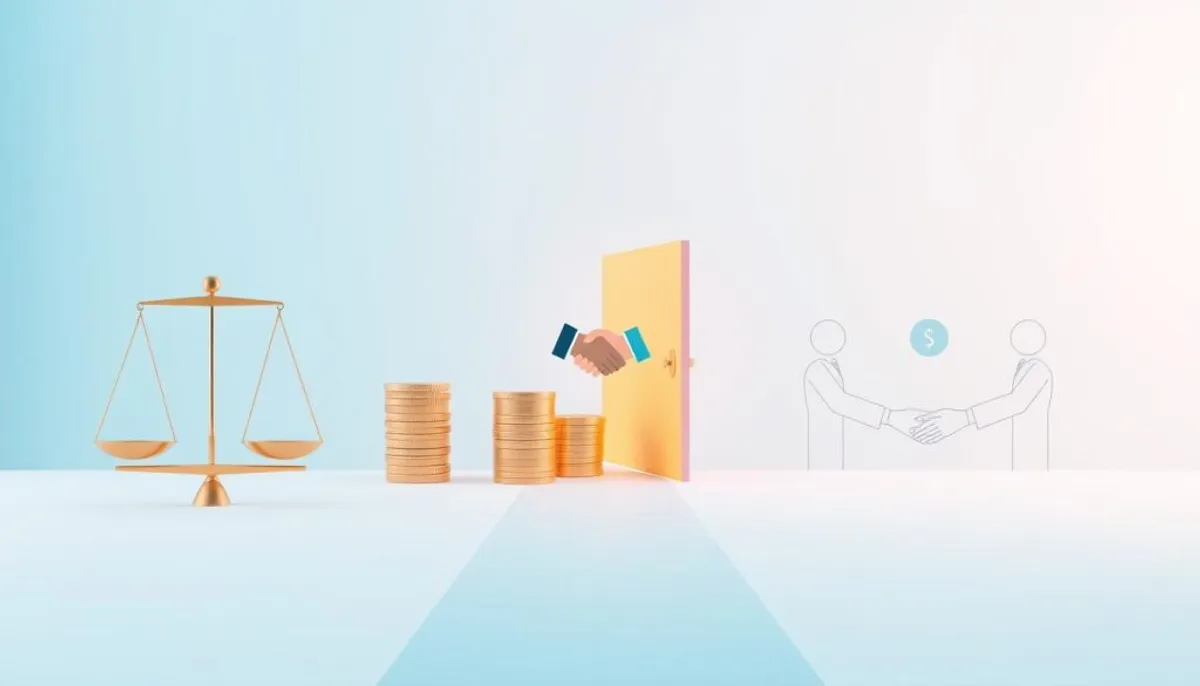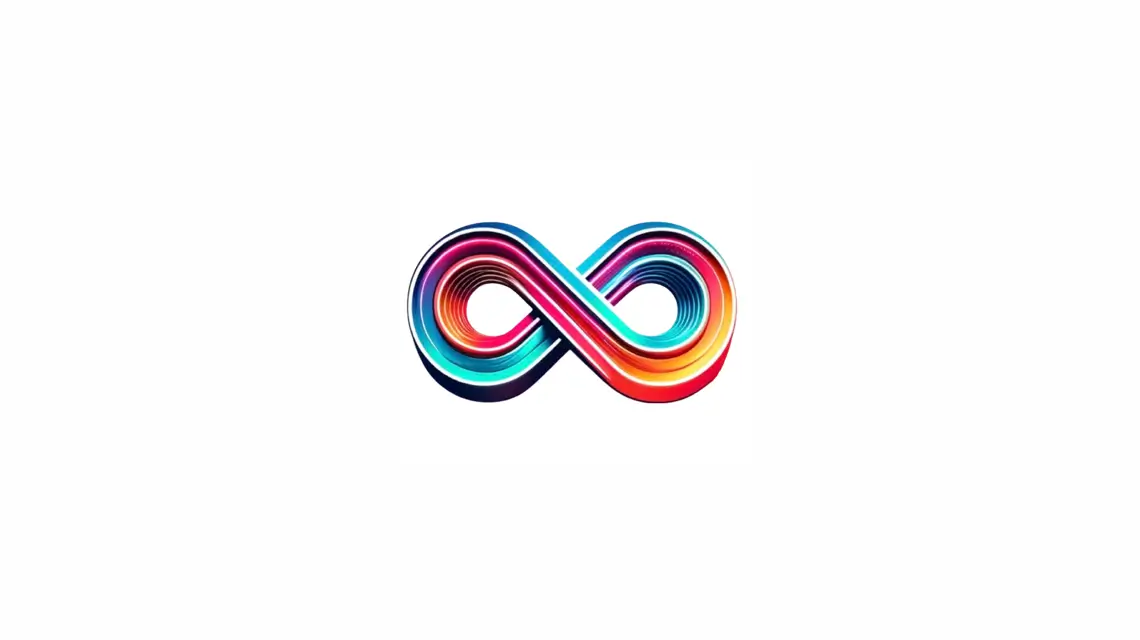Collection agencies are pivotal in the financial sector. They assist businesses in retrieving unpaid invoices from delinquent customers. These entities are adept at debt collection, employing diverse strategies to engage with debtors and reclaim unpaid debts.
The debt collection industry is indispensable to the U.S. economy. It instills confidence in lenders by ensuring that outstanding debts are diligently pursued and recovered. Collection agencies typically charge a percentage of the recovered amount as their fee. This can vary from 25% to 50% of the collected debt.

Collection agency fees are often contingent upon the debt’s age and amount. Debts that are newer might incur lower fees, whereas older, more challenging debts could command higher percentages. Some agencies even acquire debts at a discount from creditors, aiming to collect the full amount for their profit.
The strategies for delinquent debt recovery are varied. Agencies may employ phone calls, written notices, or even in-person visits to reach out to debtors. In extreme cases, they might resort to legal action, filing lawsuits against non-paying customers as a last resort.
Key Takeaways
- Collection agencies recover unpaid invoices for businesses
- Fees typically range from 25% to 50% of collected debts
- Various methods are used to contact debtors
- Some agencies purchase debts at a discount
- Legal action may be taken as a last resort
- The industry plays a vital role in the U.S. economy
Understanding Debt Collection Agencies and Their Role
Debt collection agencies are integral to our credit-driven economy. They assist creditors in retrieving unpaid debts from consumers and businesses. Let’s explore the realm of debt collection and understand their operational dynamics.
Definition and Core Functions
Debt collection agencies specialize in recovering unpaid debts. They act on behalf of creditors or purchase debts outright. Their primary objective is to obtain payment for overdue accounts, employing legal methods.
Types of Debts Handled
These agencies manage a broad spectrum of financial obligations:
- Credit card balances
- Medical bills
- Personal loans
- Utility bills
- Student loans
Industry Impact on Economy
The debt collection industry profoundly impacts our credit-driven economy. By facilitating the recovery of losses, these agencies bolster confidence in credit extension. This sustains the financial ecosystem, enabling businesses to extend credit and consumers to engage in purchases.
Debt collection agencies typically earn 25% to 50% of the recovered amount. They often negotiate settlements for less than the full debt, striking a balance between recovery and feasibility. The Fair Debt Collection Practices Act regulates their activities, safeguarding consumers from unfair practices while enabling legitimate debt recovery efforts.
How Do Collection Agencies Make Money
Collection agencies employ various strategies to generate revenue from debt collection. Their primary goal is to recover unpaid debts for creditors while turning a profit. Let’s explore the main methods these agencies use to make money.
Commission-Based Revenue Model
The most common approach for collection agencies is the commission-based model. Agencies typically charge a percentage of the recovered debt, usually between 25% and 50%. This fee structure incentivizes agencies to collect as much as possible, benefiting both the agency and the creditor.
Percentage Rates and Fee Structures
Contingency fees vary based on several factors:
- Age of the debt
- Type of debt
- Balance amount
- Difficulty of collection
Older or harder-to-collect debts often command higher fees. Some agencies offer tiered pricing, with rates increasing as the debt ages.
Debt Purchase Business Model
Another revenue stream for collection agencies is debt buying. In this model, agencies purchase entire debt portfolios from creditors at discounted rates. They then keep all recovered amounts, potentially earning significant profits. This approach is riskier but can be highly lucrative for skilled agencies.
| Revenue Model | Description | Typical Fees |
|---|---|---|
| Commission-Based | Agency collects on behalf of creditor | 25-50% of recovered amount |
| Debt Purchasing | Agency buys and collects debts | Keeps 100% of recovered amount |
The Collection Process and Recovery Methods
The collection process commences when creditors entrust accounts to agencies. This typically occurs when debts surpass 60 days past due. Agencies then verify account eligibility, ensure accurate data, and integrate accounts into their databases.
Debt recovery techniques employed by collection agencies include:
- Sending letters and emails
- Making phone calls
- Reporting to credit bureaus
Agencies serve as intermediaries between creditors and consumers. Their primary objective is to secure full payment, negotiate payment plans, or settle for reduced amounts when permitted.
Collection strategies frequently incorporate advanced technology. Agencies invest in telephone dialer systems and software for generating template letters to streamline their operations. They also staff their offices like call centers to efficiently manage recovery tasks.
The success of debt recovery depends on the alignment of agency expertise with the type of accounts. Commercial and consumer collections demand distinct approaches. It is essential for creditors to maintain a close relationship with the agency to grasp customer interactions and gain a comprehensive financial overview of outstanding accounts.
To bolster debt recovery efforts, many agencies now employ debt collection software. These tools often include features such as:
- Business process automation
- Centralized databases
- Data analytics
- Online payment portals
By utilizing these advanced tools and techniques, collection agencies strive to maximize recovery while adhering to legal standards and fostering positive customer relationships.
Legal Framework and Compliance Requirements
Debt collection agencies operate within a complex legal landscape. The Fair Debt Collection Practices Act (FDCPA) is the cornerstone of debt collection laws in the United States. It aims to protect consumers from unfair practices and sets standards for ethical debt recovery.
Fair Debt Collection Practices Act Overview
The FDCPA prohibits harassment, false threats, and misleading communication. It sets specific calling hours and restricts contact with consumers represented by attorneys. In 2020, the Consumer Financial Protection Bureau introduced Regulation F, updating FDCPA rules. This revision limits contact frequency and introduces opt-out options for emails and texts.
State Regulations and Requirements
Beyond federal laws, states often impose additional debt collection regulations. These may include licensing requirements, bond postings, or stricter communication rules. Agencies must navigate this patchwork of state-specific guidelines to ensure full compliance.
Consumer Protection Guidelines
Consumer protection is at the heart of debt collection laws. Key protections include:
- Right to debt verification
- Protection from harassment
- Restrictions on asset seizure
- Limitations on additional fees
Noncompliance with these regulations can lead to severe consequences. For example, violations of the Telephone Consumer Protection Act can result in penalties of $500 to $1,500 per incident. Adhering to these guidelines is crucial for agencies to maintain ethical practices and avoid legal repercussions.
| Regulation | Key Points | Potential Penalties |
|---|---|---|
| FDCPA | Prohibits harassment, false threats, unfair practices | Lawsuits, damages, legal fees |
| TCPA | Regulates automated calls and texts | $500-$1,500 per violation |
| State Laws | Vary by state, may include licensing requirements | Fines, license revocation |
Technology and Tools in Modern Debt Collection
Modern debt collection has undergone a significant transformation, driven by cutting-edge technology. Debt collection software now plays a pivotal role in streamlining processes and enhancing efficiency. These advanced tools have revolutionized the industry, making it more effective and compliant.
Automated dialing systems have transformed the way agencies contact debtors. These systems boost productivity by minimizing idle time and ensuring adherence to regulations like the Telephone Consumer Protection Act. They enable agencies to reach a larger number of debtors while maintaining legal standards.
Data analytics has emerged as a game-changer in debt collection. By analyzing payment histories and demographic information, agencies can craft targeted strategies. This data-driven approach significantly enhances success rates and improves recovery outcomes.
| Technology | Impact |
|---|---|
| Automated Dialers | Increased agent productivity |
| Data Analytics | Improved collection strategies |
| Online Payment Portals | Higher collection rates |
| CRM Systems | Better customer service |
Online payment portals have streamlined the collection process. Debtors can now make payments at any time, leading to higher collection rates. Customer Relationship Management (CRM) systems offer a comprehensive view of each account, enhancing both customer service and collection outcomes.
These technological advancements have not only improved efficiency but also ensured compliance with evolving legal requirements. As the industry continues to embrace innovation, we can anticipate even more sophisticated tools to emerge. These will further transform debt collection practices.
Debt Settlement and Negotiation Strategies
Collection agencies employ diverse strategies to settle outstanding debts. These methods aim to recover funds while offering consumers feasible solutions. Let’s examine some common debt negotiation tactics.
Settlement Options and Terms
Debt settlement involves negotiating with creditors to pay less than the full amount owed. Collection agencies often accept partial repayments, marking the debt as paid on credit reports. Typically, settlement agreements reduce credit card balances by up to 50%. Some debt relief companies suggest offering 25% to 30% of the outstanding balance for debt forgiveness.
Payment Plan Arrangements
When lump-sum settlements aren’t feasible, agencies may propose payment arrangements. These plans enable debtors to make recurring installments over time. Payment history significantly impacts credit scores, so consistent payments can help rebuild creditworthiness.

Compromise Solutions
Agencies assess debtors’ financial situations to determine appropriate compromise solutions. This may include reducing interest rates or waiving certain fees. It’s important to note that creditors aren’t legally obligated to reduce outstanding debts or offer discounted payoffs.
| Strategy | Typical Outcome | Potential Impact |
|---|---|---|
| Lump-sum Settlement | 25%-50% of total debt | Immediate debt resolution |
| Payment Plan | Full amount in installments | Gradual credit improvement |
| Interest Rate Reduction | Lower monthly payments | Easier debt management |
While these strategies can provide relief, it’s crucial to consider their long-term effects. Debt settlements may remain on credit reports for seven years, potentially affecting future financing opportunities. Also, forgiven debt amounts might be subject to income tax. Careful consideration of all options is essential when pursuing debt resolution.
Advantages of Using Collection Agencies
Engaging professional debt collection agencies brings substantial benefits to businesses. These entities enhance operational efficiency, streamlining the debt recovery process and elevating success rates. By tapping into their expertise, companies can concentrate on their core activities while ensuring effective debt management.
Collection agencies employ cutting-edge techniques and technologies to optimize recovery. Their deep understanding of complex regulations and consumer protection laws reduces legal risks for creditors. This professional approach often results in quicker payments, with debtors more inclined to respond promptly to agency communications.
The financial benefits are considerable:
- Agencies typically charge 20-50% of collected amounts
- Businesses recover funds that might be written off
- Improved cash flow and reduced bad debt liabilities
Outsourcing debt collection also enhances a company’s reputation. It showcases a proactive approach to financial management while preserving professional client relationships. The detailed documentation maintained by agencies is invaluable for potential legal actions.
In summary, collaborating with collection agencies combines specialized expertise with operational efficiency. This partnership offers a cost-effective solution for businesses aiming to optimize their debt recovery efforts.
Introducing ti3: A Modern Alternative to Traditional Collections
In today’s fast-paced business world, managing overdue accounts poses a significant challenge. Enter ti3, a cutting-edge SaaS platform designed to revolutionize the handling of unpaid invoices. This innovative solution offers a fresh approach to automated debt collection, blending efficiency with client retention strategies.
Automated Payment Recovery Features
Ti3 streamlines the entire collection process through smart automation. The platform sends timely reminders, escalates issues when needed, and facilitates smooth payment collection from overdue customers. With automated systems, businesses can reduce average payment times from over 30 days to just 14 days, significantly improving cash flow.
Client Relationship Preservation
Unlike traditional collection methods that can strain business relationships, ti3 prioritizes maintaining positive connections with clients. The platform’s approach is gentle yet effective, helping businesses recover payments without damaging valuable customer relationships. This is crucial, as 89% of small-to-medium-sized businesses report that late payments impede their growth.
Cost-Effective Solutions
Ti3 offers a budget-friendly alternative to traditional debt collection agencies. By automating tasks, it eliminates the need for third-party collectors and reduces the time spent on payment-related admin work. Consider this: 65% of businesses spend 14 hours weekly on payment collection tasks. Ti3 can dramatically cut this time, allowing companies to focus on growth instead of chasing payments.
With ti3, businesses gain a powerful tool for managing overdue accounts, preserving client relationships, and improving their bottom line. This SaaS platform represents the future of debt collection – efficient, respectful, and cost-effective.
Best Practices for Choosing a Collection Agency
Choosing the right collection agency is vital for successful debt recovery. When evaluating potential partners, focus on key aspects that align with your business needs and values.
Evaluation Criteria
Start your collection agency selection process by examining these critical factors:
- Industry experience and expertise in relevant debt types
- Geographical coverage matching your customer base
- Compliance with legal requirements, including state licensing and FDCPA rules
- Technology infrastructure for efficient debt recovery
- Communication protocols and reporting capabilities
- Fee structure and recovery rates

Conduct thorough vendor due diligence by interviewing agencies, visiting their facilities, and checking references. Review agency performance metrics, such as debt recovery rates and client satisfaction scores. For instance, Summit Account Resolution boasts a 34.8% recovery rate, while Prestige Services Inc. reports 38%.
Red Flags to Watch For
Be cautious of these warning signs during your selection process:
- Unethical practices or aggressive collection tactics
- Lack of transparency in fees or operations
- Poor reputation among clients or consumers
- Inability to provide clear performance metrics
- Outdated technology or inadequate data security measures
Remember to review contracts for termination clauses in case of unsatisfactory performance. By carefully evaluating potential agencies and watching for red flags, you can select a collection partner that aligns with your company’s values and customer service standards.
Future Trends in Debt Collection
The debt collection sector is undergoing a transformative shift, propelled by digital advancements and regulatory updates. Several pivotal trends are currently molding the industry’s trajectory.
Digital debt collection emerges as a dominant force. With 63% of fund leaders deeming AI the decade’s most impactful innovation, the sector is rapidly adopting technological solutions. AI in collections is demonstrating its efficacy, allowing firms to reclaim 96% of original debts by focusing on just 30% of accounts.
Regulatory adjustments are nudging the industry towards more ethical conduct. A staggering 62% of finance entities report elevated compliance expenditures over the past decade. This trend is anticipated to persist as fresh regulations materialize, aimed at safeguarding consumers and upholding fair collection standards.
The trajectory of debt collection encompasses several elements:
- Personalized consumer engagement
- Streamlined digital communication
- Data-driven decision making
- Enhanced privacy and security measures
| Trend | Impact |
|---|---|
| AI and Automation | Increased efficiency, better targeting |
| Regulatory Compliance | Fairer practices, higher costs |
| Digital Communication | Improved debtor engagement |
| Data Analytics | More informed strategies |
As the industry confronts hurdles such as escalating defaults and intensified competition, embracing these trends will be imperative for achieving success in the evolving debt collection landscape.
Conclusion
The debt collection industry is indispensable in our credit-driven economy. With consumer debt exceeding $4 trillion in the United States, collection agencies are essential for debt recovery. They specialize in efficiently recovering outstanding debts, often charging clients 40-70% of the collected amount.
Collection agencies do more than just recover debts. They bring expertise in laws and best practices, streamline operations, and employ specialized tools like Skip Tracing. This professional approach saves businesses time and resources, enhancing recovery rates.
Consumer rights are paramount in debt collection. The Fair Debt Collection Practices Act enforces strict guidelines, preventing collectors from contacting debtors at unreasonable hours or making false claims. New alternatives, such as ti3, are emerging, offering automated, cost-effective solutions that preserve client relationships.
As the industry evolves, striking a balance between effective debt recovery and ethical practices is crucial. Understanding the collection process benefits both consumers and businesses, promoting a healthier financial ecosystem for all.
RelatedRelated articles



